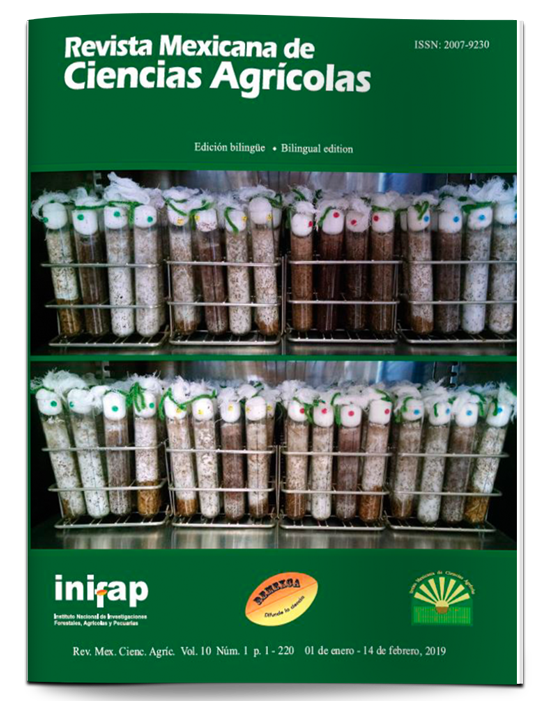Estabilidad de Compostas Estáticas Biodinámicas a Partir de Restos de Cultivos Regionales
DOI:
https://doi.org/10.29312/remexca.v10i1.1337Keywords:
Opuntia, Moringa, biodynamic agricultureAbstract
Compost elaboration from agricultural wastes allows an alternative way for organic fertilizers production. Traditionally the constant turning makes this system economically unfeasible, so the static compost production associated with the biodynamic preparations (BP) application promote the sustainable alternatives development. The aim of the present investigation was to evaluate the inclusion of BP (fundamental basis of biodynamic agriculture) in static pile composting from prickly pear and moringa wastes, as main susbstrates, establishing a completely randomized design with bifactorial arrangement, in Zuazua, Nuevo León. Four treatments were considered: T1, Prickly pear+BP; T2, Moringa+BP; T3, Prickly pear and T4, Moringa. Also, the compost stability was evaluated during one year, through the 16 variables behavior (physical, chemical and biological). Significant interactions showed that the use of prickly pear and BP application in compost piles, promoted in general a higher mineralization, temperature and lower humidity. According to the statistical significance of the principal factors, in treatments with BP was founded the maximum value of bacteria CFU and in treatments with prickly pear, the highest values of organic matter, C:N ratio and hydrogen. The macro- and microelements concentration increased in each treatment at the end of the evaluated period, with exception of N, K and Cu. Moreover, the highest carbon loss percentage (64%) was obtained in T2. The decomposition of the main regional substrates used in the static piles with passive aeration was promoted by the BP inclusion.
Downloads
Downloads
Published
How to Cite
Issue
Section
License
The authors who publish in Revista Mexicana de Ciencias Agrícolas accept the following conditions:
In accordance with copyright laws, Revista Mexicana de Ciencias Agrícolas recognizes and respects the authors’ moral right and ownership of property rights which will be transferred to the journal for dissemination in open access. Invariably, all the authors have to sign a letter of transfer of property rights and of originality of the article to Instituto Nacional de Investigaciones Forestales, Agrícolas y Pecuarias (INIFAP) [National Institute of Forestry, Agricultural and Livestock Research]. The author(s) must pay a fee for the reception of articles before proceeding to editorial review.
All the texts published by Revista Mexicana de Ciencias Agrícolas —with no exception— are distributed under a Creative Commons License Attribution-NonCommercial 4.0 International (CC BY-NC 4.0), which allows third parties to use the publication as long as the work’s authorship and its first publication in this journal are mentioned.
The author(s) can enter into independent and additional contractual agreements for the nonexclusive distribution of the version of the article published in Revista Mexicana de Ciencias Agrícolas (for example include it into an institutional repository or publish it in a book) as long as it is clearly and explicitly indicated that the work was published for the first time in Revista Mexicana de Ciencias Agrícolas.
For all the above, the authors shall send the Letter-transfer of Property Rights for the first publication duly filled in and signed by the author(s). This form must be sent as a PDF file to: revista_atm@yahoo.com.mx; cienciasagricola@inifap.gob.mx; remexca2017@gmail.
This work is licensed under a Creative Commons Attribution-Noncommercial 4.0 International license.



